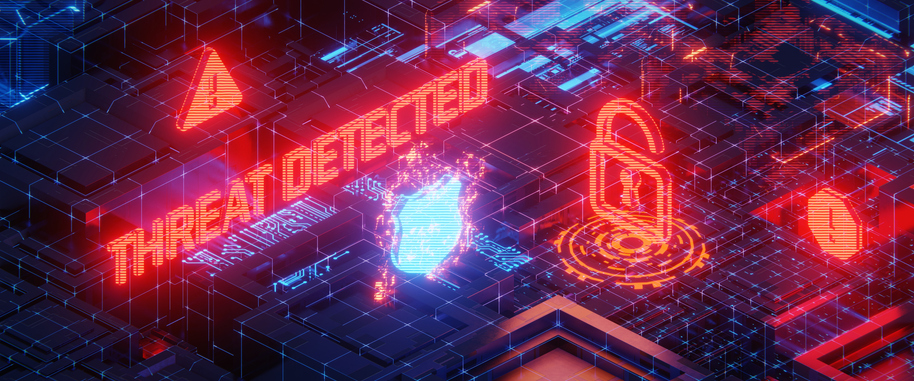4 min read
Demystifying Data Privacy: Non-technical and Technical Controls Unveiled
In today’s interconnected world, the topic of data privacy often surfaces amid conversations about technology and security. It's a concern that...
3 min read
 The Amazing Team at Force One
:
Mar 9, 2024 12:00:00 PM
The Amazing Team at Force One
:
Mar 9, 2024 12:00:00 PM
Phishing scams are a common method used by cybercriminals to trick individuals into revealing their personal information, such as passwords or credit card details. By recognizing the signs of phishing emails and websites, you can protect yourself from falling victim to these scams.
One way to identify phishing emails is by checking the sender's email address. Legitimate organizations typically use professional email addresses that match their domain name. Be wary of emails from suspicious or unfamiliar addresses.
Another red flag to look out for is poor grammar or spelling mistakes in the email. Legitimate organizations usually proofread their emails before sending them out, so errors could indicate a phishing attempt.
Phishing websites often try to mimic the appearance of legitimate websites to deceive users. Check the URL carefully before entering any personal information. Look for secure connections (https://) and ensure the website domain matches the organization it claims to represent.
If you receive an email or visit a website that seems suspicious, it's best to err on the side of caution. Avoid clicking on any links or downloading any attachments. Instead, contact the organization directly through their official website or customer support to verify the legitimacy of the communication.
Creating strong and unique passwords is essential for protecting your personal information online. A strong password should be at least 12 characters long and include a combination of uppercase and lowercase letters, numbers, and special characters.
Avoid using easily guessable information, such as your name, birthdate, or common words, as part of your password. Instead, opt for a passphrase that is memorable to you but difficult for others to guess.
It's important to use a different password for each online account you have. This way, if one account is compromised, the others will remain secure. Consider using a password manager to help you generate and store unique passwords for each site.
Remember to update your passwords regularly, especially if you suspect any security breaches or if you receive notifications from websites about potential unauthorized access. By practicing good password hygiene, you can significantly reduce the risk of your personal information being compromised.
Two-factor authentication (2FA) adds an extra layer of security to your online accounts. With 2FA enabled, you will need to provide a second form of verification, such as a unique code sent to your mobile device, in addition to your password.
This additional step makes it much more difficult for hackers to gain unauthorized access to your accounts, even if they have obtained your password through a phishing scam or data breach.
To enable 2FA, check the security settings of your online accounts or apps. Many websites and services offer the option to enable 2FA, and it's highly recommended to take advantage of this feature whenever possible.
By enabling 2FA, you can greatly enhance the security of your personal information and protect yourself from unauthorized access.
Regularly updating your privacy settings is an important step in safeguarding your personal information online. Many websites and apps have default privacy settings that may not provide the level of protection you desire.
Take the time to review and adjust your privacy settings on social media platforms, online accounts, and mobile apps. Limit the amount of personal information you share publicly and ensure that only trusted individuals or friends can access your private information.
Keep in mind that privacy settings can change with updates or new features, so it's crucial to periodically revisit and update your preferences. By staying informed and proactive, you can better control how your personal information is shared and minimize the risk of it falling into the wrong hands.
Installing and regularly updating antivirus software is an essential step in safeguarding your personal information on your devices. Antivirus software can detect and remove malware, viruses, and other malicious programs that could compromise your data.
Ensure that you have reputable antivirus software installed on all your devices, including computers, smartphones, and tablets. Set up automatic updates to ensure you have the latest protection against emerging threats.
In addition to antivirus software, it's important to keep your operating system and other software up to date. Software updates often include security patches that address vulnerabilities that could be exploited by cybercriminals.
By taking these proactive measures, you can significantly reduce the risk of your devices being infected with malware and protect your personal information from unauthorized access.
If you’re interested in more job tips and ways to advance your career, check out more details at ForceOne Cybersecurity.

4 min read
In today’s interconnected world, the topic of data privacy often surfaces amid conversations about technology and security. It's a concern that...

4 min read
In the digital age, effective cybersecurity is no longer a luxury but a necessity. For businesses and IT professionals, the stakes have never been...

2 min read
In the sprawling digital landscape of modern technology, where bytes flow like rivers and connections form the arteries of our cyber existence, lies...